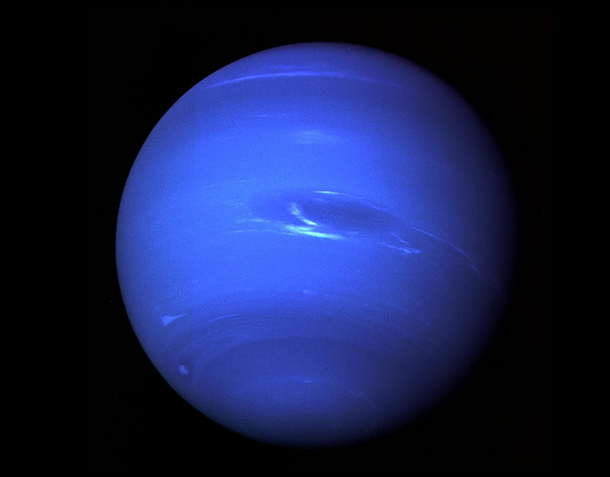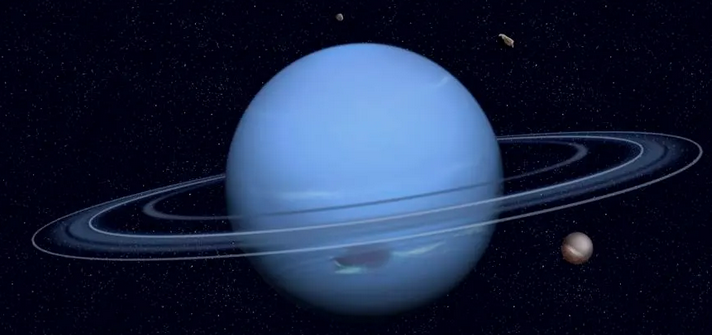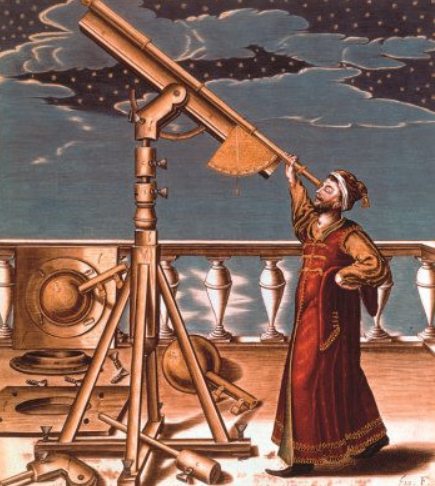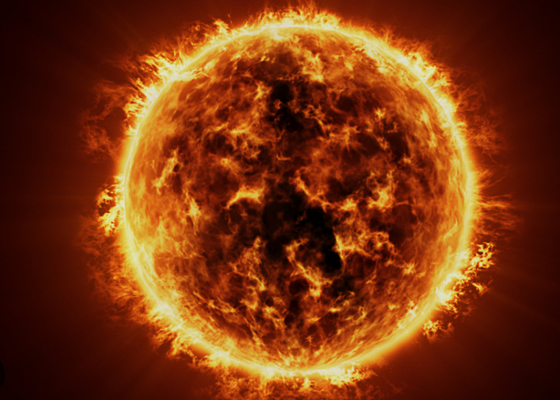We will learn more about Neptune in this post and some of the impressive statistics that surround this body in our solar system. So if you want to find out the answers to Neptune’s orbital period read on.
What Is Neptune?
Once just a theoretical planet Neptune is what is known as an Ice Giant. It is the eighth and most distant planet from our solar system, the Sun. Neptune is so distant from Earth, the third planet from the Sun, that it is the only planet that is not visible with the naked eye from Earth’s surface.

Its vast distance from the Sun means that from its discovery in 1846 until 2011 it had made just one full rotation of its orbit around our solar system’s only star. It takes roughly 165 years for Neptune to complete its orbit of the Sun.
How Far is Neptune from Earth?
Neptune at its closest is 2.7 billion miles from Earth. However when they are furthest apart from each other they are 2.9 billion miles apart. This may not seem like a huge difference but it does equate to a variance of 200 million miles.
How Far is Neptune from the Sun?
An astronomical unit (AU) is equal to the distance from the Sun to the Earth and Neptune is 30 AU from our solar system’s star. This equates on average to 2.8 billion miles (4.5 billion kilometers). Interestingly, although usually closer to the Sun than the Dwarf planet Pluto, every 248 years for a 20 year period the two switch in terms of relative distance from the Sun. The last time this happened was between 1979 -1999.
What Is an Ice Giant Planet?
Ice giants are massive planets composed mainly of elements heavier than hydrogen and helium. These might include oxygen, carbon, nitrogen and sulfur. Our solar system is home to two ice giants, Uranus and of course Neptune.
Ice giants form when gravity pulls together swirling gas and dust. They may form closer to a star but migrate further away over time becoming colder as they go. They usually have a smaller rocky core with most of their mass being made up of materials such as water, methane and ammonia.
Neptune’s Structure
Over 80% of Neptune’s mass consists of a hot dense fluid which includes water, methane and ammonia. This covers a rocky core which produces a very intense gravitational pull. This is why even though Neptune is not the largest planet in the solar system it is the densest.
Scientists believe there may be a boiling ocean of super hot water below Neptune’s cold clouds. The density and gravitational pull of the planet however means it does not boil away due to incredibly high pressure. Essentially the boiling water layer is under too much pressure to actually evaporate as it would on Earth.
Surface
There is no solid surface to Neptune as the atmosphere extends to great depths in the planet. This consists of mainly hydrogen, helium and methane. As this atmosphere gets closer to the core it merges into water and other melted ices. This core is estimated to have the same mass as the entirety of the planet Earth.
Does Neptune Have Moons and Rings?
According to NASA Neptune has 14 known moons the largest of which is Triton which was itself discovered just over 2 weeks after Neptune was. Named for the Sea God Neptune, its moons all bear the names of other lesser known sea deities of antiquity.

Triton is unique in our solar system in that it is the only moon that circles its planet in a direction opposite to Neptune’s own. This is a strong indication that Triton may be a captured body caught in Neptune’s orbit by its intense gravitational pull.
The moons of Neptune are:
- Triton
- Thalassa
- Sao
- Psamathe
- Larissa
- Naiad
- Nereid
- Neso
- Proteus
- Despina
- Galatea
- Halimede
- Hippocamp
- Laomedeia
Neptune has at least five main rings as well as 4 prominent ring arcs which have been discovered so far. The main rings are known as:
- Galle
- Leverrier
- Lassell
- Arago
- Adams
These rings are not thought to be especially old and may not be around for long in stellar terms.
The ring arcs of Neptune Liberté (Liberty), Egalité (Equality), Fraternité (Fraternity), and Courage are interesting in that they are clumps of dust. Laws of motion suggest they should spread out evenly however it is thought that the moon Galatea may be stabilizing these arcs with its gravitational effects.
History of the Observation of Neptune
Neptune was unknown to ancient astronomers as it could not be seen with the naked eye from Earth. It would not be until telescopes were invented and they reached a certain level at development that Neptune was finally officially confirmed.
Galileo Galilei’s drawings produced on 28th December 1612 and 27th January 1613 show plotted points which match up with the positions of Neptune in the sky on those dates. Of course Galileo did not realize what he had seen so he is not considered the discoverer of Neptune.

Over two centuries later in 1821, Alexis Bouvard published astronomical tables of the orbit of Uranus. Uranus being a near neighbor of Neptune and known since antiquity it was noted that substantial deviations from the tables indicated an unknown body may be affecting its orbit. It was theorized that gravitational interactions from a potential unseen planet may be causing the deviations.
This captured the attention of several astronomers in the next few decades. It was predictions as to location by Urbain Le Verrier that led Johann Galle to finally locate Neptune through his telescope in 1846. Several astronomers had seen and noted Neptune over the years but none had realized they were seeing this elusive 8th planet of our solar system.
Space Exploration
To date the only spacecraft to travel to Neptune is Voyager 2. It passed by the planet on 25th August 1989. During the encounter, signals from the spacecraft took 246 minutes to reach Earth. This is why Voyager 2’s mission relied on preloaded commands. On its way there the spacecraft performed a close pass of the moon Nereid. On the same day as Voyager 2 passed Neptune it also passed close to Triton.
There are several current proposed missions to return to Neptune seeking to confirm and discover some aspects of its structure and the nature of its moons. Both China and the US are still considering future missions.
What Is the Sun?
The orb that is visible in our daylight sky which we know as the sun is in fact a star. This star is classified as a yellow dwarf and is central to our solar system. Earth and the other planets of our solar system orbit this vast star. In fact it is our own planet’s rotation and orbit which creates the appearance of the sun moving across our sky. It itself is stationary as we revolve around it.
How Big Is the Sun?
The sun on a clear day is visible from the earth and in fact we should never stare directly at it. This is despite it being 93 million miles away so just how big is this giant orange orb? Scientists estimate that the sun has a radius of roughly 435,000 miles.

This may sound massive but there are many known stars which are much larger. In comparison to our planet however the son is roughly 330,000 times the mass of earth and we could fit our planet into the sun 1.3 million times.
What Holds the Sun Together?
The sun because it is a star is actually a huge ball of gas which is held together by its own internal gravitational forces. It is made up of several regions which include in order from the center out:
- Core
- Radioactive zone
- Convection zone
- Photosphere
- Chromosphere
- Transition zone
- Corona
Once material exits the corona of the sun at supersonic speeds, it becomes what is known as a solar wind. This solar wind forms a huge magnetic bubble of sorts around the sun which is known as the heliosphere. It is this heliosphere that extends beyond the orbit of all the planets in our solar system. Essentially our planet as well as all others in the solar system are held within the sun’s atmosphere.
How Long Does Neptune Take to Go Around the Sun?
Neptune is the eighth and most distant known major planet from our Sun in the solar system. It is in fact so far away from the Sun that its orbital period takes 60,190 Earth days, or almost 165 Earth years. So essentially a Neptunian year takes 60,190 Earth days.
The rotation speed of Neptune is relatively fast, taking just 16 hrs. When you couple this short day with the massive orbital period you discover that a Neptunian year has 89,666 Neptunian days.
Final Thoughts
Neptune’s orbit is not perfect so at various times in its 165 year trip around the Sun it is at different distances from that huge star. On average though it is 2.8 billion miles away which is a mind boggling distance. It is so far away in fact that it would take at least 12 years to reach Neptune’s orbit from Earth.
It takes a great deal of complicated mathematics and scientific knowledge to help spacecraft make such journeys so deep into space to come close to planets like Neptune. Picking the right time during Neptune’s orbital period and correct launch location is vital to make sure a spacecraft can traverse as short a distance as possible and accurately pass close.
